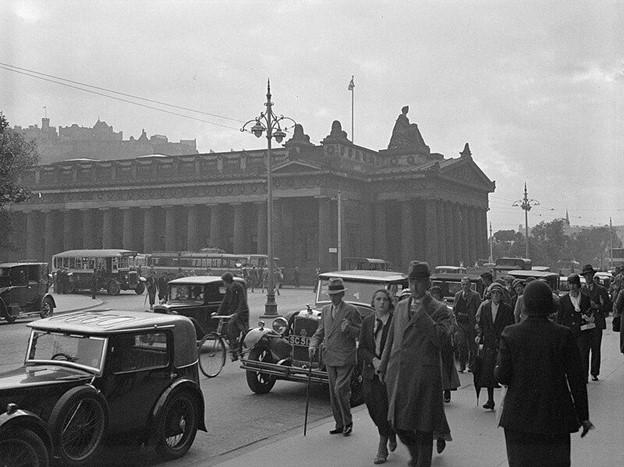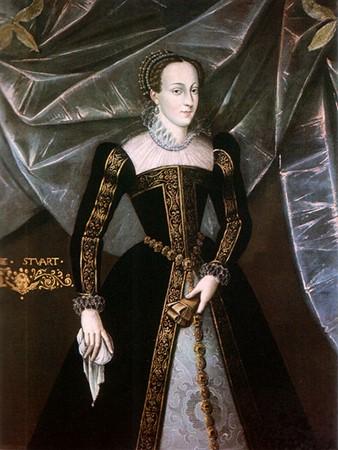The world’s largest online family history resource - Start now
-
Black History Month – Ancestry Initiatives to Honor Black Heritage -
Marking 80 Years Since Auschwitz Liberation: Our Commitment to Holocaust Remembrance -
1921 Census of England & Wales Now Available -
Updated Ancestral Subregions
GET THE LATEST
New posts + monthly newsletter.
GET THE LATEST
New posts + monthly newsletter.
Ever wonder what Scottish, Irish, and English people have in common? Perhaps you’d like to know where your own family comes from. This guide offers a history of Scots so that you can learn more about your ancestors’ heritage if you have Scottish DNA origins.
Scotland was formed in the 8th century when several kingdoms in the area sought to create a show of force against Viking raids and invasions. Scotland and England have a long, fraught history made even more complicated by the reign of the English monarch, Mary Queen of Scots. Learn more about how historical events like these shaped Scotland and its relationship with the United Kingdom.

Early History of Scots
Written records of Rome’s conquests into the region end with the Romans retreating after repeated uprisings throughout Britannia by groups like the “Scoti.” As a result, historians know very little about what happened between the time Rome invaded in 124 and the time Viking raids began at the end of the 8th century.
After the first raid, the Picts and Gaels in the region knew that if they united, they would have the numbers and resources needed to mount a successful defense against the invading Vikings. This is what caused Scotland to become its own land. Later, the Picts and the Celts founded the Kingdom of Alba, which became a feudal society in the 12th century.
In 1286, Scotland’s King Alexander III died, leaving the throne to Margaret, his young granddaughter. The Scottish lords chose six regents to govern Scotland until she was old enough to rule. Sadly, Margaret died in 1290, leaving Scotland without a monarch. Thirteen people, including John Balliol, John Hastings and Robert de Brus, competed for the throne, giving England an opportunity to invade in 1296.
Scottish culture pays homage to both its pagan history and the Christian influence of Irish missionaries and Anglians who preached to the Gaels and Picts in the 6th century. Despite some overlap between the Scottish and Irish cultures, Scotland has many distinct traditions of its own, such as the use of emblems to show allegiance to specific clans.
The Battle for Independence
Understanding Scotland’s unique culture starts with knowing more about its fierce battle for independence. William Wallace was a significant historical figure during the First Scottish War for Independence, but little is known about his origins. Much of the information people have about him has been adapted into films, such as Braveheart. What is true is that he was a successful military strategist who had a series of resounding victories over English forces.
Wallace led his first rebellion in 1297 by killing the Sheriff of Lanark. It was one of many rebellions he was involved in and he continued to revolt against England even when Scottish noblemen were under English influence. The two battles that Wallace is most noted for are the Battle of Stirling Bridge and Battle of Falkirk.
The Battle of Stirling Bridge dealt a huge blow to English confidence in the war because Wallace decimated a much larger force. The Battle of Falkirk was a victory against Wallace by English forces.
The war raged until 1314, when Robert the Bruce defeated King Edward II of England at the Battle of Bannockburn. While Scotland didn’t officially receive its independence until another 14 years later, the victory at Bannockburn was the turning point in the war that secured Scotland’s independence in the First War of Scottish Independence.
Unfortunately, only 4 years after the first war for independence, there was a second one. It was only 23 years later that Scotland could finally enjoy peace and freedom.

Mary, Queen of Scots History
Over the next 246 years, Scotland remained an independent nation, ruled by a series of powerful monarchs. Mary, Queen of Scots, was one of the most notable because every English monarch to rule since her death is descended from her. She was originally supposed to marry Prince Edward, son of King Henry VIII, but Scotland fell back on their agreement. This was during the Scottish Reformation, which was a brutal period for both the English and Scottish, whose countries passed from Protestant to Catholic rule repeatedly.
While Mary was herself a Protestant, she had her son baptized under the Catholic faith. James VI of Scotland would go on to become James I of England and the king of a unified England and Scotland.
Mary had many illicit affairs throughout her life, falling in love with numerous men. Her affairs were what ultimately had her imprisoned in Scotland. After escaping and mounting an unsuccessful revolt, she fled to England.
Mary was captured and found guilty of treason in England after plotting to overthrow Queen Elizabeth I. She abdicated her throne, but Elizabeth I died without any heirs. This meant that Mary’s child, James, would become the new king of England.
The Jacobites
In the late 1600s, England was a global power. Its enemies supported a movement to overthrow the ruling monarch and restore another. The primary motive was religion because the English Parliament installed a Protestant ruler over the rightful claim of a Catholic, James Francis Edward Stuart.
Bonnie Prince Charlie was one of the most prominent figures of this period. He was the son of James Francis Edward Stuart and kept up the fight after his father’s death. Had Charles not done so, the Jacobite rebellions wouldn’t have lasted nearly as long.
Both France and Spain had supported different attempts by the Jacobites to overthrow the English crown and place James Francis Edward Stuart on it. The rebellions lasted over 50 years, but none of them proved successful. The Jacobites had a huge impact on Scotland, however, because they repeatedly attempted to gain Scottish support and many Scots were involved in the fighting.
Modern Scotland
In 1707, Scotland became part of Great Britain, ending the Scottish Parliament. During this period, the Scottish middle class began to thrive and the country made huge advances in the arts, technology, medicine, agriculture, philosophy, science, archeology, and manufacturing. This period was known as the Scottish Enlightenment and had an impact on all Western societies. For example, some of David Hume’s ideas made their way into the Declaration of Independence. Hume was a Scottish philosopher who believed that all human ideas come from lived experience.
Enlightenment thinkers shared their knowledge via scholarly works, spreading their ideas far beyond Scotland’s borders. For example, economist Adam Smith wrote The Wealth of Nations, which remains one of the most important books on how nations acquire wealth. Scottish intellectuals, businessmen, scientists, and doctors brought a lot of this knowledge to the United States through immigration.
Discover Your Scottish Heritage Today
Want to know if you’re a distant relative of Mary, Queen of Scots? Perhaps you’re related to William Wallace or another notable Scottish historical figure. Learning about your family history can be enlightening and fun while teaching you more about the events of the past and your connection to them.
Ancestry® can help you connect to your Scottish roots with a wide collection of records from Scotland and beyond. Be sure to check Scottish immigration records, employment records, census data, and property sales when tracing your heritage.. You can also search baptism records if you discover a Catholic branch in your family tree. You can even dig up information about your ancestors’ estranged relatives by searching the admission registers for Scottish asylums.
Start a free trial with Ancestry to dig deeper into your Scottish roots, or take an AncestryDNA® test and see where your family may have lived in Scotland generations ago.
Sources
-
- http://www.scottish-history.com/origins3.shtml
- https://www.historic-uk.com/HistoryUK/HistoryofBritain/Timeline-of-Roman-Britain/
- https://www.worldhistory.org/picts/
- https://www.britannica.com/biography/William-Wallace
- https://www.historic-uk.com/HistoryMagazine/DestinationsUK/The-Battle-of-Bannockburn/
- https://www.nms.ac.uk/explore-our-collections/stories/scottish-history-and-archaeology/mary-queen-of-scots/mary-queen-of-scots/who-was-mary-queen-of-scots/
- https://www.nts.org.uk/learning/adult-learning/jacobites
- https://www.parliament.uk/about/living-heritage/evolutionofparliament/legislativescrutiny/act-of-union-1707/
- https://www.historic-uk.com/HistoryUK/HistoryofScotland/The-Scottish-Enlightenment/
- Image 1: https://www.loc.gov/item/2001706004/
- Image 2: https://commons.wikimedia.org/wiki/File:Royal_Scottish_Academy_aan_The_Mound,_Edinburgh,_Bestanddeelnr_190-1068.jpg
- Image 3: https://commons.wikimedia.org/wiki/File:Mary_Queen_of_Scots_Blairs_Museum.jpg
























